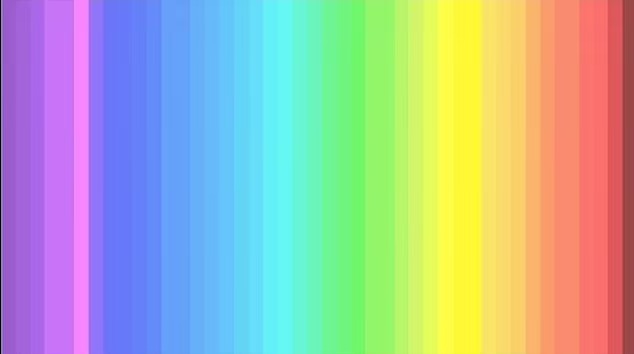Published on
updated on
Reading 2 min.
Do you know tetrachromatism, also called tetrachromatism? This rare genetic trait allows some people to see more colors than others. Tetrachromatism affects approximately one in 100 people worldwide. Are you affected? To find out, take the test!
Most humans have three color-sensing cones in their retina. This allows them to see colors (and their variations) ranging from red to green to blue in the visible light spectrum. But this is not the case for everyone.
When our eye is functioning, the retina transmits light signals to the brain via the optic nerve. Once these signals reach the parts of the brain responsible for vision, they are converted into the images we see. These photoreceptors are made up of rods and cones. Rods allow the eye to detect light and see in the dark, while cones allow the eye to see and differentiate colors.
Most people are trichromatic, meaning that the three types of cone cells in their eyes are sensitive to three wavelengths of light – red, blue and green. Combining the signals from these three makes it possible to see a wide range of colors.
What is tetrachromatism?
But this is not the case for everyone. Indeed, some people (one in 100 on average) have a rare genetic trait, called tetrachromatism (or tetrachromatism). This gives them a fourth color-detecting cone in their retinas. This genetic modification involves the light-sensitive retina at the back of the eye, which contains cells called photoreceptors, providing color vision.
A genetic modification that particularly affects women
People affected by tetrachromatism differentiate more colors within the range of light visible to humans, and distinguish more subtle color variations. This “anomaly” would affect women more, because the ability of our eyes to detect colors is information coded by genes present on the X chromosome. Tetrachromatism is therefore more common in women, who have two, compared to men who only have one X chromosome.
Are you affected? To find out, here is a test!
Certain vision tests can help determine if a person is tetrachromatic, although genetic testing is the only way to be sure. To find out if you might be a tetrachromat, look closely at the spectrum below and see how many hues you can distinguish. Most people can see between 20 and 32 colors on the spectrum; tetrachromatic people should be able to see at least 33 shades (and up to 39 different colors).

However, be aware that computer screens can only have a limited number of shades, so try this test, but keep in mind that this is only an indicator. A doctor will carry out this test in real conditions, in order to obtain a more precise result.
